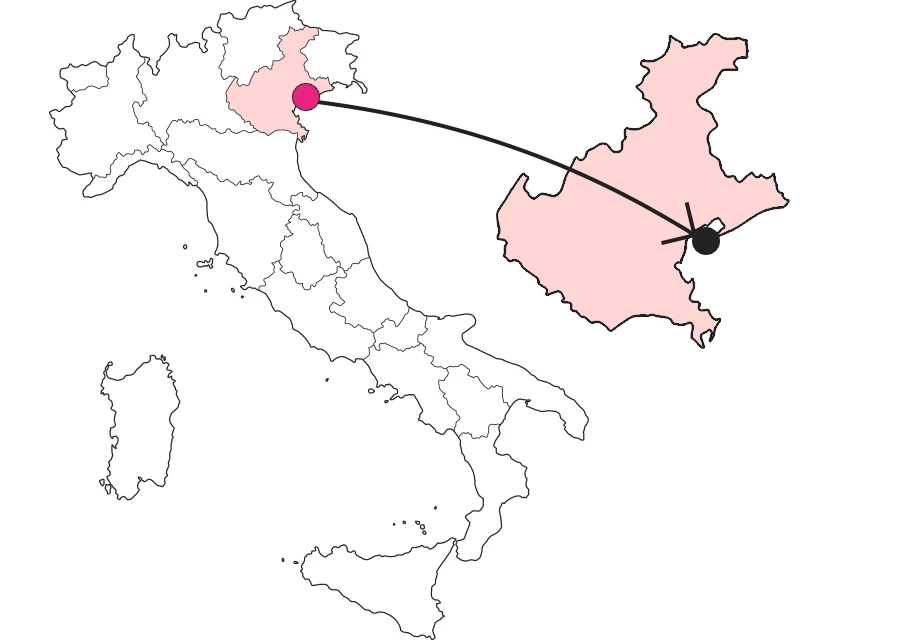

Celestial mosaics in Torcello
When the lagoon shone before Venice



Where is

What is it and where is it
How did those celestial images land in this speck of land at the water's edge? that din of mosaics in the Basilica of Torcello on the quiet edge of the Venetian lagoon? They did not take the vaporetto to the Fondamente Nóve or emerge among the smoldering sandbanks. But someone must have brought the stone to the island, assembled the pieces, grafted the ancient vines surrounding Santa Maria Assunta! This is not the time for questions. You have come this far, come in...
Because it is special
...and bathe yourself in gold. Bathed in the light of the mosaics, absolute figures gaze at you: a Virgin Odigyria, "she who leads," a Christ Pantocrator, "he who holds all things," hosts of Church doctors, hordes of the furious damned. Beneath the motionless scything of the drapery of robes there do not seem to be bodies like ours, for on these walls Byzantine, Ravenna, Lagoon mosaicists have reviewed eternity. And if you turn around, toward the counter-façade, you will read the story of a crucified Christ - resurrected and triumphant in the Anastasis as he divides the gates of hell, saves Adam and is approached by Eve, ashamed, with veiled hands - Christ awaited by the heavenly court, who has set up his throne with insignia in the Etimasia, for when he reigns on earth - and lower down, above the portal, the devils trying in vain to topple St. Michael's scales - and at the bottom, before your eyes, on one side Hell, on the other Paradise.
Not to be missed
Now the doubt has become more insistent. How did Paradise come to Torcello? The answer was found underground by the team of young archaeologists of the "Torcello abitata" project, which started in 2012 and recently ended. What came to light rewrote the history of the lagoon capital. We had been taught that Venice was born as a refuge on the water at the descent of the barbarians and that Torcello was one of the first landings. Far from it: Torcello was not inhabited out of fear of foreign invasion, but because of climatic changes that had finally made trade from the mainland capital, Altino (that little town along the low road to Jesolo, which was once larger than Milan), impossible.
A bit of history
Let's go in order. During the sixth century the metropolis of Altino decided to open up to the East through the lagoon port of Torcello, which was soon the scene of flourishing trade. The remains of inhabited and commercial structures found have suggested a more complex settlement than hitherto assumed. At the height of the island's development, at the behest of Isacio, exarch of Ravenna, the basilica was erected, consecrated in 639 by Mauro, bishop of Altino, lord between the Sile and Muson rivers. After the arrival of the Lombards the basilica was made the seat of the diocese, and from the year one thousand it was enlarged, in a second factory, assuming the appearance we know under Orso Orseolo, son of the Doge. The strength of Venice was born in the suburbs, and Santa Maria Assunta is a golden witness to this history.
Curiosity
But new climatic changes and the Venetians' thirst for marble marked the island's collapse. Today there are almost more churches than houses on Torcello, and the basilica's imposing bell tower would only call thirteen parishioners to mass. Inhabitants have fled, now they have, because of the arrival of new barbarians who wield cameras and leave a sea of litter on the ground as they pass. The holy lagoon trinity Murano-Burano-Torcello is the daily destination of a pilgrimage of boaters. So, all that remains is to wake up early, board with those going to work and set foot in a silent Torcello, wait for the basilica to wake up, and, inside, dream of when Paradise lived there.
Enter the Map of Italy's Undiscovered Wonders and find treasures where you least expect it... Inspire, Recommend, Share...
Collections
The Map thanks:
Enter the Map of Italy's Undiscovered Wonders and find treasures where you least expect it... Inspire, Recommend, Share...
Where is

Collections

